Guinea pigs are big picks on the quality and quantity of food provided. In addition, many fruits, vegetables and plants are not at all suitable for proper nutrition of this animal. In this article we will talk about what can and cannot feed a guinea pig, and also consider the features of feeding these pets at home.
General feeding rules
A properly composed diet of a guinea pig affects not only its vital functions, but also the general condition, mood, and activity of your pet. Nutrition should be not only nutritious, full of trace elements and vitamins, but also balanced.
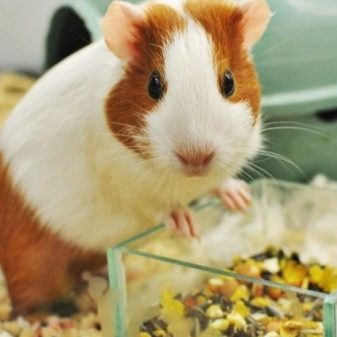
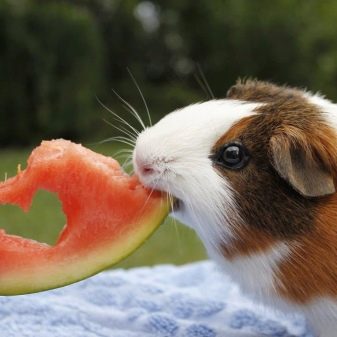
Below you can find a list of recommendations for making a diet for guinea pig.
- The main rule is systematic and timely. Set aside a specific time during the day at which you have the opportunity to feed your pet. This is necessary so that he gets used to the time frame and knows when exactly he will be given food again. The animal’s body will eventually adjust to such a schedule, and the pet will learn how to rationally use food.
- Guinea pigs are those pets that are not able to estimate the amount of processed food. In other words, they do not know a sense of proportion. That is why one of the basic rules of feeding is to control the quantity of products. On a day it is worth giving a strictly defined dose of food and not more, even if the animal makes it clear with all its strength that it wants more. Overfed individuals are often obese, which can lead to problems of the cardiovascular system.
- Another important rule in feeding guinea pigs is that food should be varied and change from time to time. This applies to both fruits, vegetables, and varieties of feed. However, this does not mean that one feed should be replaced immediately with another. New food should be introduced gradually, with a consistent addition to the main diet. If the old food has run out completely, just feed the animal a new food along with the fruit that the pet already ate.
- When buying new types of fruit for an animal, carefully monitor the condition of the pet after the feed. If the mumps has vomiting or diarrhea, constipation - this product is definitely not worth adding.
- No need to go overboard with the number of goodies on the menu, otherwise the animal may get used to them and refuse other food. Moreover, many of the goodies are not allowed to be given more than 1 time per week.
- No spoiled, stale or moldy foods (even if cut off at the place of decay) - only fresh, healthy and high-quality food from trusted suppliers.
- The pet must always have access to a water source. It should be clean, it should not float food, hay or animal excrement. To achieve this, you should buy special drinkers for the cage, which the animal can not just contaminate. Water is changed regularly, every day before serving. In the warm period (spring, summer), the animal will consume much more water than in winter. In winter, the pig receives the necessary part of its moisture from fruits, vegetables and herbs.
- Always keep an eye on so that feeders or food containers are clean and washed. Place food only in washed and wiped containers, otherwise the animal may accidentally eat food that has already deteriorated.
- Before adding a new fruit or vegetable to the diet it is advisable to consult a veterinarian. Better yet, if the vet has already examined your guinea pig before and knows what it can and cannot do.
- Variety is good, but you must remember the harmony between fruits and vegetables. Do not add to the diet, for example, together with bell pepper and banana, this can cause diarrhea in the animal.
- Stop feeding guinea pig completely with any pickled, salted, fried, or boiled foods. The same goes for ordinary human food from the table. All these products contain a huge amount of elements harmful to the body of the guinea pig.
- One of the most important rules sounds like this - not a single day without food. The digestive system of this animal is designed to constantly process food. If the load on the gastrointestinal tract is not provided within 18-20 hours, the animal will almost certainly die.

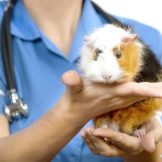
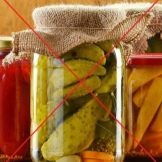
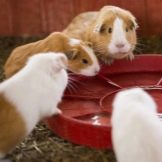
How many times a day to give food?
Most of the diseases of guinea pig are associated with the selection of the right diet, and here we are talking not only about the right products, but also about the regularity of feed. Inexperienced breeders often face the problem of obesity in their pet. Sometimes this happens because of the banal overeating and the owner’s desire to treat the guinea pig with different goodies. As a result, the pet will suffer either from obesity and gastrointestinal diseases, or from a rigid diet, necessary to restore balance in the digestive system.
If the owner prefers to feed his pet with grain or granular food, then the frequency of such feeding should be reduced to 2 meals per day.
This regularity is suitable for adults with a mature digestive system, young individuals should be fed more often.
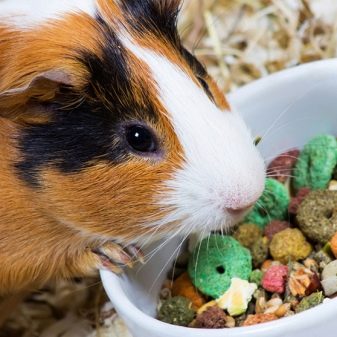
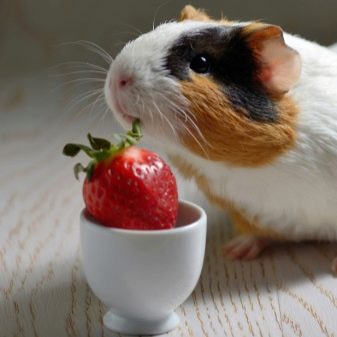
As for the number of grains in one serving, it should be at least ½ tablespoon. The food is placed in a feeder, where it remains until the animal has eaten it all. Do not immediately clean it, these animals are prone to postpone food on a "rainy day", so they can eat leftovers a bit later.The advantage of such food is that it does not deteriorate, and therefore is safer for guinea pigs than juicy and fresh products.
The composition of such food should also include small slices of fruits and vegetables. If we talk about apples or carrots, then it should be ½ tablespoon of grain plus a small circle of carrots (up to 20 grams in weight). You can make a rough schedule: in the afternoon you give the animal a juicy and fresh food in the form of fruits and vegetables, and in the evening, add grains and cereals to the diet.
Dry feeding is most often used in the diet of young, active and not yet strong guinea pigs - their body is easier to process cereals and grains, and the digestive system must get used to solid food in advance. If we are talking about sedentary individuals, then it is worth minimizing such feeding and giving priority to food with fiber. The same applies to the diet of adults or elderly people.
For a weakened body, it can be difficult to process only dry feed. In addition, such food and lack of mobility are a sure sign of obesity.
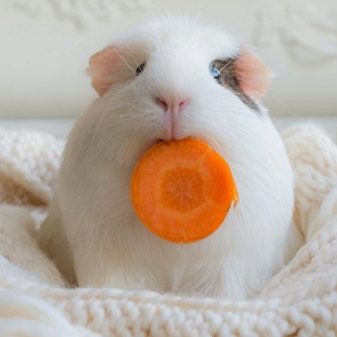
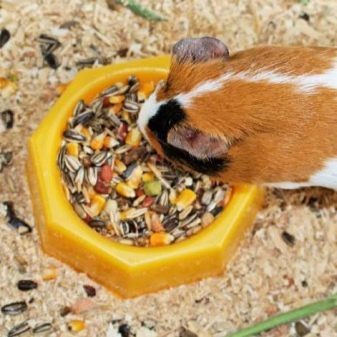
Adults, as well as in cold periods when there is a lack of vitamins and nutrients, it is recommended to include juicy food in the diet. The regularity of nutrition in this case should be at least twice a day, at the same time, the menu should not remain static - try to supplement it with other fruits and vegetables whenever possible.
In terms of the volume of such food, it is better to adhere to the following scheme - the norm for the average individual is 20-30% of the mass of the animal. In this case, if your pig weighs, for example, 800 grams, fruits and vegetables in the feed should be at least 160-200 grams.
During pregnancy or lactation, the body of the guinea pig is in an extremely vulnerable position.
The regularity of food intake should not be changed so that the schedule of lunch and dinner does not go astray, but the dosage should be doubled.
This is especially true of nursing females with cubs. During this period, discard a large amount of dry food. Fresh, green and juicy food is more suitable for them. Feeding parsley, seeds and sage in such periods is better to reduce to zero.
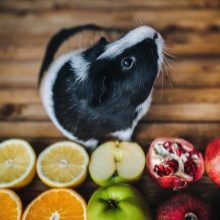
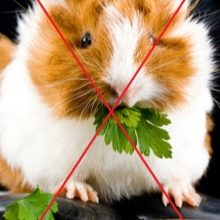
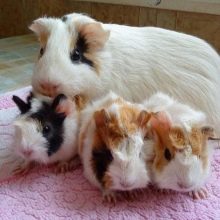
Vitamins and Minerals
The fact is that the body of guinea pigs does not contain a special enzyme, I-gluconolacton oxidase, which is involved in the synthesis of vitamin C from glucose. It is because of this circumstance that your pet is not able to get this incredibly valuable vitamin from regular food. Your task throughout the life of the animal is to regularly provide it with ascorbic acid.
With a lack of vitamin C in the body of an adult, the following pathologies can occur (most often manifested as symptoms of scurvy):
- retardation of movements, visual lameness (although the animal did not fall), decreased activity;
- lack of appetite, external lethargy and indifference to what is happening;
- diarrhea, swelling of the joints;
- under the skin and in the secretions there is blood;
- bleeding and falling teeth;
- the animal looks disheveled, the hair is crumpled, it may even fall out.
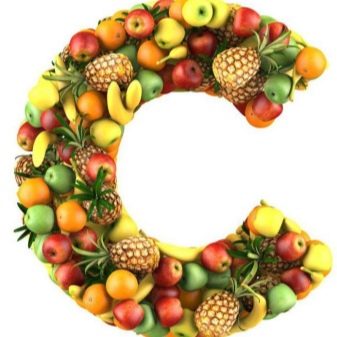
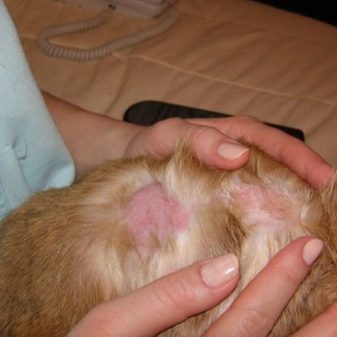
Ignoring each of these symptoms can result in the death of your pet.
In the summer, the diet should be replenished with a large amount of fresh herbs, plants, leaves and stems, not to mention fresh vegetables and fruits. Most of these fruits contain ascorbic acid. As for the cold winter period, it is necessary to gradually add synthetic ascorbic acid to the diet. Pregnant females, older individuals and young animals need an increased dose of vitamins, as well as an increased amount of food.
For an adult, you need at least 15 mg of vitamin C per kilogram of weight daily, for pregnant women and young animals should be given about 40-45 mg per kilogram of weight also every day.
The largest amount of vitamin C is found in the following vegetables, plants and fruits: tomatoes, broccoli, apples, nettles, burdock, as well as branches of raspberries and currants (necessarily with leaves), dandelion, basil, mint, parsley, cabbage, kiwi. Do not forget that many of these plants should be given in strictly limited quantities.
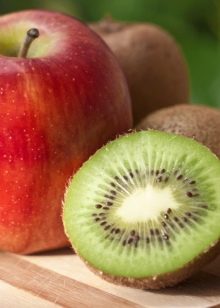
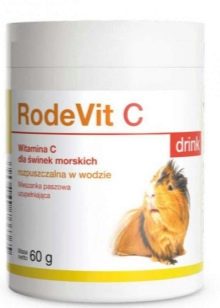
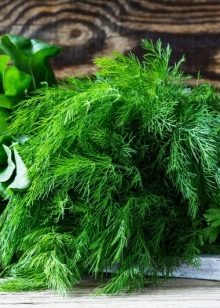
Almost all of these vegetables and fruits can be found in the public domain in the summer and autumn, which is why you should give preference to these products in the summer, rather than synthetic vitamins.
Carefully consider choosing a place to collect all the necessary herbs (in case you do not trust herbs from pet stores). Try to choose areas remote from factories, roads and industrial enterprises for their collection. The greatest danger is in the grass collected in parks and from city lawns. Typically, these plants are treated with harmful chemicals from parasites, which will also negatively affect your pet.

There are frequent cases of adding ascorbic acid to the prepared feed, an example of this is special granules or capsules from the feed mixture.
There are only two problems in such capsules:
- you do not know their composition in any way due to the fact that the mixture is homogeneous it is impossible to determine the composition, as well as to detect the presence of sawdust and dust, which sellers like to add to capsules;
- capsules are intended for long-term use, they can be stored for a long time in one particular place, and ascorbic acid after 3 months from the moment of production begins to gradually break down and loses its useful properties.
When buying ready-made feed mixtures, it is always worth checking the date of their production. To keep the food fresh and not spoiled, it should be stored in a dry, dark place with low humidity. It is under such conditions that ascorbic acid will slow down the decomposition processes.
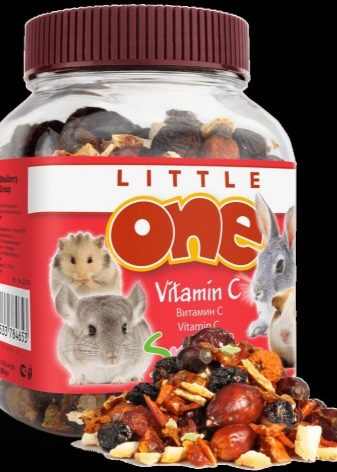
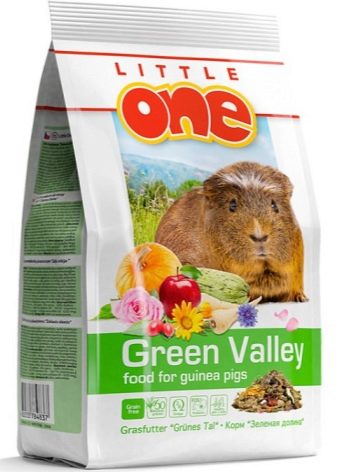
Pig diet
There are a number of products whose use affects the health and well-being of guinea pigs most favorably. With a balanced and varied diet, your animal will always remain healthy, active and cheerful.
Stern
In the natural habitat, guinea pigs are purely herbivorous, and therefore, as has already been said, the main part of their diet is plant foods.
Solid dry food
It is ready made or with your own hand. prepared mixtures of cereals / legumes, seeds, capsules from plants, as well as dried fruits.
Depending on the quality and cost of the feed, it can contain many nutrients, including broccoli, wheat, peas, granules, millet, oats, and some dried fruits. All these vegetables and plants are incredibly useful, and when dried, they also help the animal grind the incisors.
Such feeds can be bought at pet stores or prepared on their own. In the latter case, you will be sure of the composition of the feed. However, it is already worthwhile to monitor the balance of such food and the content of proteins, fats, carbohydrates and fiber that is appropriate for your animal in it.
Most often, millet and oats are added to such feeds as a basis, they are rich in carbohydrates and proteins, and the animal itself loves them very much.
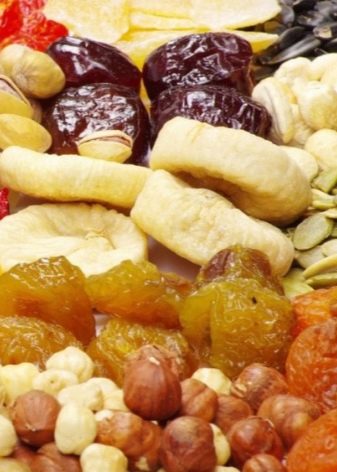
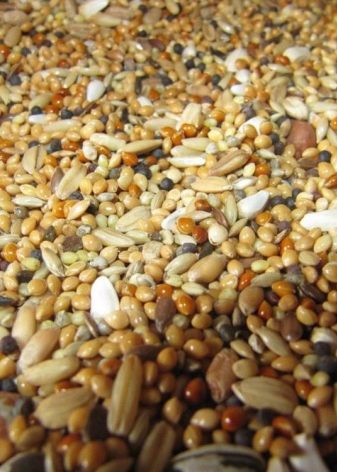
Hay
It is an essential element of food of any rodent, including guinea pig. It serves the animal as a rich source of fiber necessary for the healthy functioning of the digestive system. In addition, hay is often used as flooring in pet homes.
Keep a small amount of hay in the cage. Clean up spoiled, rotten or dirty hay immediately, otherwise the animal may simply be poisoned. When buying hay, make sure that it is fresh, dry, without areas affected by mold and fungi. Moreover, a pleasant grassy odor should be present.Also, make sure that thorns and parts of the plant that may harm the oral cavity or intestines of the animal are not caught in the hay.
Even if you are sure that the grass you collected (when haymaking on your own) is useful and dangerous plants are not present there, you should look at it again at home.
It is recommended to warm the purchased hay in a microwave or oven at medium power for no longer than 1-2 minutes, so you exclude the presence of harmful parasites and bacteria in it.
The most useful for guinea pigs is hay from legumes, as well as from alfalfa and some cereals. This also applies to dried stems of plants such as nettle, plantain, burdock.
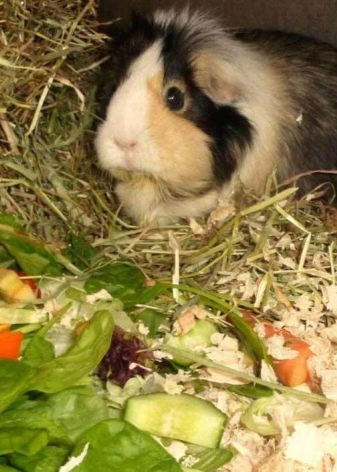
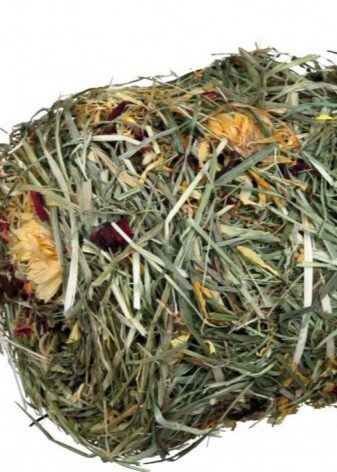
Green feed
This is in turn grass, some varieties of garden and meadow plants. In order for the effect on the diet to be more favorable, all foods of this type should be exceptionally fresh, without musty, rotten or spoiled foods.
As a rule, such plants contain a huge amount of fiber. In the spring and summer, it is easy to collect burdock, dandelion, nettle, wormwood, clover, and sage outside the house.
In winter, some plants like parsley, dill or wormwood can be grown at home and occasionally give the pet as a treat.
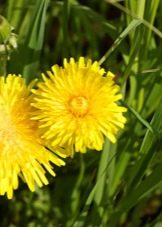
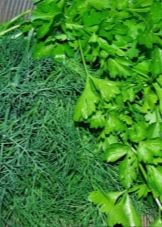
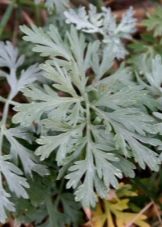
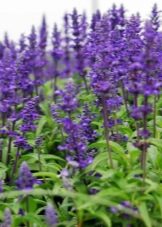
Succulent feed
This includes some fruits, vegetables, and berries, which contain a large amount of ascorbic acid and other nutrients.
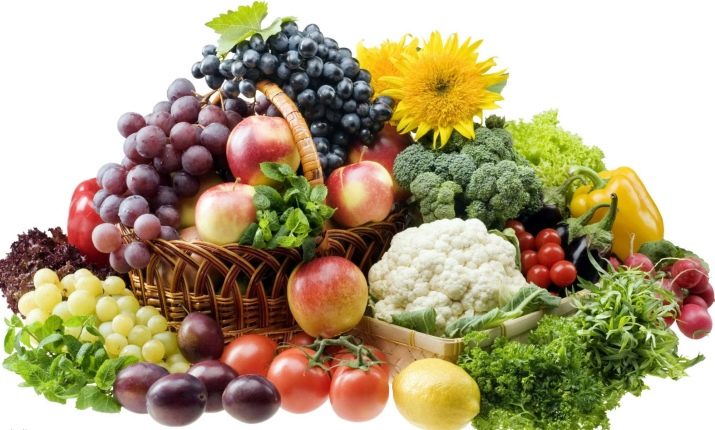
Goodies and goodies
This may include some types of berries, as well as nuts, dried fruits, branches of raspberries and currants. They must be included in the diet. from time to time, and not be there constantly. You should not oversaturate the weak organism of guinea pigs with large quantities of the same rose hips or viburnum, it will not cause anything other than diarrhea.
Twigs of trees and shrubs are best given in the summer, in dry form they will be useless for guinea pigs. Refuse to feed the animal with branches of conifers, the same applies to oak branches.

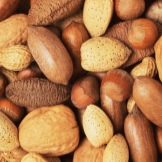
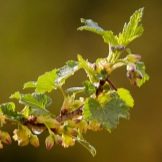
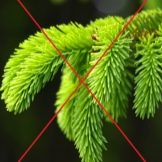
Vegetables and greens
Eating vegetables and plant food is crucial for guinea pigs. From them they receive the necessary vitamins, fiber, provide the body with vitamin C - an essential component for the life of a guinea pig.
Of the vegetables in the first place, of course, fresh cucumbers, carrots and fennel, zucchini and pumpkin, turnips, celery (tubers) and beets, leaves of Beijing cabbage. Almost each of these vegetables can be given to the animal every day, but do not forget to supplement the diet with new elements. It is forbidden to feed the pigs with the same product for a long time.
Guinea pigs are very fond of dill, lettuce leaves, young corn (ears). Also apply to herbs and tops of carrots, celery and beets.
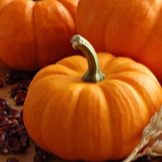
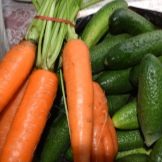
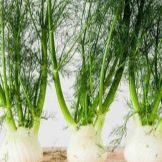
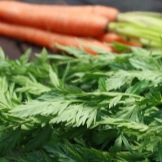
This can also include some meadow plants that are extremely useful for pigs: dandelion, burdock, plantain.
Fruits and berries
These products are good for their juiciness, high content of natural fructose. However, giving them too often is not worth it - no more than 3-4 times a week.
The most harmless fruit for pigs will be apples, grapes (always seedless), pears, plums.
The berries also contain a large amount of fructose and healthy vitamins. These are currants, raspberries, strawberries and blueberries, cherries and cherries (try to get rid of the seeds in advance so that the animal does not accidentally choke).
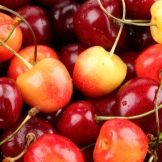
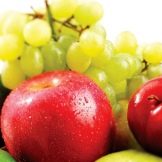

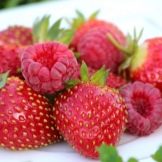
Nuts and seeds
Nuts and some seeds contain a huge amount of fat, which are useful for guinea pigs only in strictly limited quantities - no more than 2 nuts 1 time per week. You can add them in crushed form to dry food, then the animal is more likely to eat them.
Useful for guinea pigs will be walnuts, peanuts, hazelnuts, almonds. Be sure to buy nuts specifically for animals. Those sold at kiosks are usually heavily chemicals treated and are not suitable for guinea pigs.
Flaxseeds are best for pigs; pumpkin seeds, sunflower seeds, dill and sesame seeds will be useful in limited quantities.
In no case should you give the animal hemp seeds. The same applies to fried or slightly warmed seeds - this idea should be abandoned.
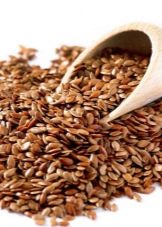
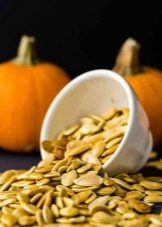

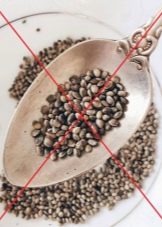
Prohibited Products
In terms of nutrition, the fragile organism of guinea pigs is a real gourmet, in addition, these animals are exclusively herbivores, therefore, their diet should include predominantly plant foods.
It is permissible to give them tomatoes, cauliflower and white cabbage, Jerusalem artichoke, rutabaga, artichoke, and bell pepper in limited quantities with medium regularity.
You can not give even in minimal quantities any kind of potato (fresh, sprouted, boiled), onions in any form, radish and radish, horseradish, eggplant, garlic. As you can see, all of these vegetables have high acidity, which the animal will not be able to process.
In their natural environment, the ancestors of the guinea pigs did not eat fruit, their constitution did not allow this, therefore the guinea pig organism is not adapted to them. It is permissible to give bananas, melon, kiwi, pineapple, apricot, peach, including dried fruits, in a limited amount with medium regularity.
This list also includes some citrus fruits, for example, orange, mandarin (excluding lemon), in extremely small quantities.
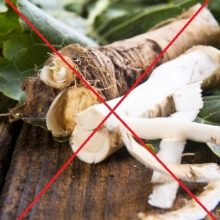
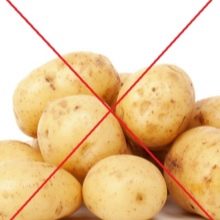
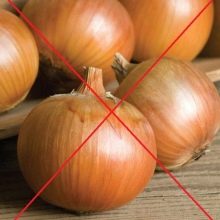
You can not give even minimal amounts of lemons, avocados, grapefruits, lime, pomegranate, dates, persimmons. In the same avocado contains a huge amount of fat, and the lemon is too high a level of acidity, even for humans. It is worth noting that some types of fruits are better absorbed in the form of dried fruits.
If we talk about berries in the diet, then they are used either as a treat or as a fortified food supplement. In most cases, medicinal berries are added to the diet no more than once a week.
Gooseberries, blackberries, cranberries, mountain ash, sea buckthorn can be given in limited quantities with medium regularity. A limited amount in this case is not more than 1 berry 1-2 times a week.
Greens should be included in the hay for your guinea pig. There are frequent cases when, along with useful and nutritious grass, harmful and even poisonous plants got into the hay. It is worth sorting out the list of plants that are least useful or deadly for guinea pig.
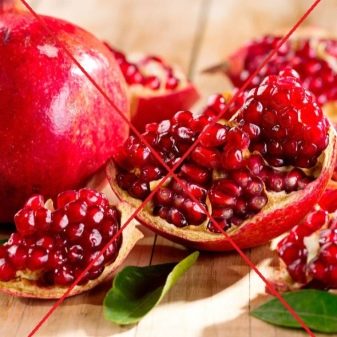
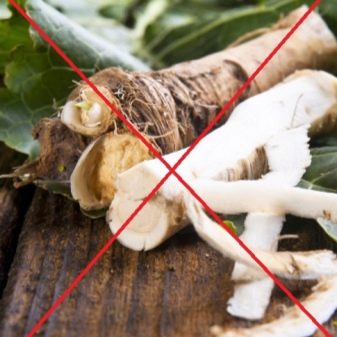
In a limited amount with medium regularity, it is permissible to give her parsley, dandelion, spinach, St. John's wort, Ivan tea, cilantro, wormwood, coltsfoot. All of these plants contain vitamins and microelements necessary for the life of the guinea pig to a minimum extent.
You can not give even in minimal quantities sorrel (due to its high acidity), meadow and onions (including its feathers), motherwort, valerian, lavender, sow thistle, fern, belladonna, rosemary and celandine. If you collect hay yourself, then check it not only for the presence of these plants, but also for their possible inflorescences and lost roots. The best option would be to buy ready-made fresh hay from trusted firms or pet stores.
Most of the nuts used by humans are also suitable for food for guinea pigs, but their ratio to other foods should be minimal. Nuts contain a large amount of fats and proteins, which are necessary for guinea pigs in very small quantities.
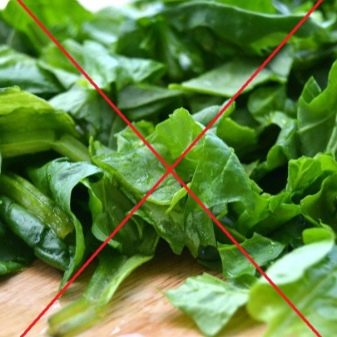
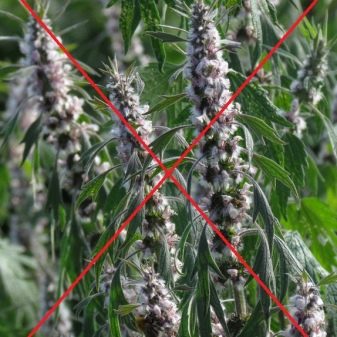
Other harmful and unacceptable products:
- some legumes (beans, boiled peas), most cereals;
- any dairy products (milk, cheese, cottage cheese), as well as products containing meat;
- many domestic plants are deadly for guinea pigs, and therefore try to prevent accidental exits of the animal from the cage;
- also you can not give eggs in any form;
- products containing sugar, which is harmful to absolutely all animals, including chocolate, sweets, cookies;
- flour and bakery products (bread, rolls, bread rolls).
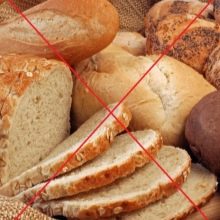
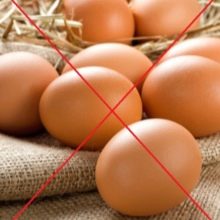
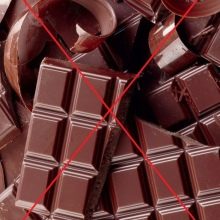
About how you can feed a guinea pig, see the next video.










